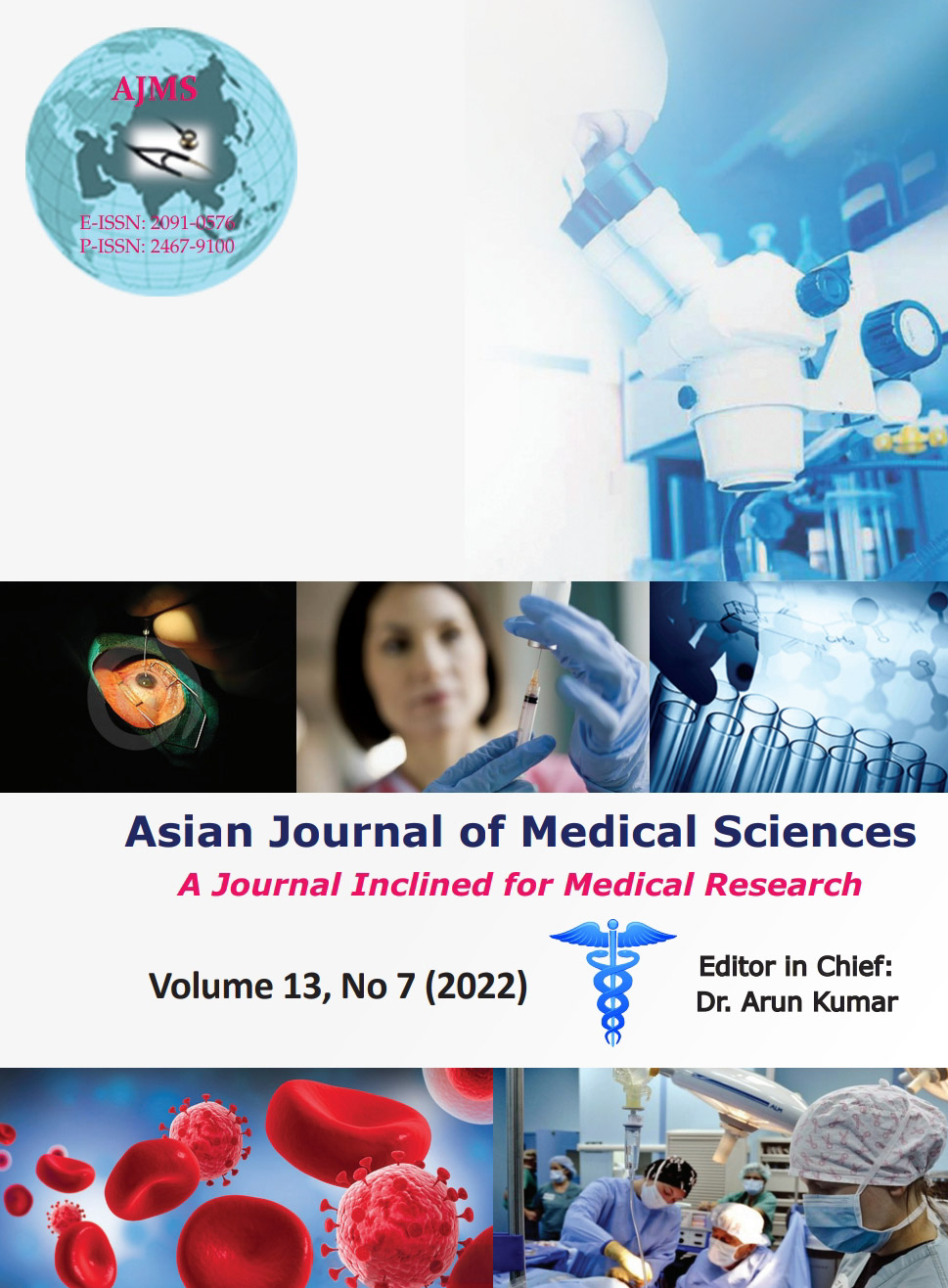Study of cardiovascular dysfunction in chronic liver disease in a tertiary care hospital in eastern India
Keywords:
Cardiomyopathy, Chronic liver disease, Cirrhosis, Heart failureAbstract
Background: Chronic liver disease (CLD) exhibits characteristic hemodynamic changes along with pathological changes in the myocardium. Compensated by the decreased systemic vascular resistance, overt heart failure is usually not seen, and thus cardiac pathology is frequently overlooked.
Aims and Objectives: The objectives of the study were to study the presence, types, and severity of cardiovascular (CV) dysfunction in patients of CLD.
Materials and Methods: An observational cross-sectional study on 50 patients of CLD at Calcutta National Medical College and Hospital, with all relevant investigations.
Results: Out of a sample of 50 patients, of which 14.3% were mild, 34.3% moderate and 51.4% severe CLD (by Child-Pugh Class), 28.6% had a high normal heart rate (90 to 100/min), 45.7% had increased stroke volume index, and 42.9% increased cardiac index, reflecting hyperdynamic circulation. In 42% cases, left ventricular ejection fraction was increased more than 65%, reflecting hyperdynamic circulation, but decreased <55% in 23% cases, which may be an indicator of cirrhotic cardiomyopathy. Ejection fraction is significantly (P=0.016) increased after paracentesis in 33.3% patients, reflecting the mechanical effect of ascites on cardiac function. Diastolic dysfunction was present in 60% (P=0.012) and left ventricular mass index was increased in 45.7% cases. All the parameters correlated with increasing Child-Pugh Class severity of CLD.
Conclusion: A high level of awareness is needed to take into account the presence of CV dysfunction and cirrhotic cardiomyopathy in patients of CLD and predict the risk of adverse cardiac events. Specific treatment modalities need further study to improve prognosis in these patients.
Downloads
Downloads
Published
How to Cite
Issue
Section
License
Copyright (c) 2022 Asian Journal of Medical Sciences

This work is licensed under a Creative Commons Attribution-NonCommercial 4.0 International License.
Authors who publish with this journal agree to the following terms:
- The journal holds copyright and publishes the work under a Creative Commons CC-BY-NC license that permits use, distribution and reprduction in any medium, provided the original work is properly cited and is not used for commercial purposes. The journal should be recognised as the original publisher of this work.
- Authors are able to enter into separate, additional contractual arrangements for the non-exclusive distribution of the journal's published version of the work (e.g., post it to an institutional repository or publish it in a book), with an acknowledgement of its initial publication in this journal.
- Authors are permitted and encouraged to post their work online (e.g., in institutional repositories or on their website) prior to and during the submission process, as it can lead to productive exchanges, as well as earlier and greater citation of published work (See The Effect of Open Access).




